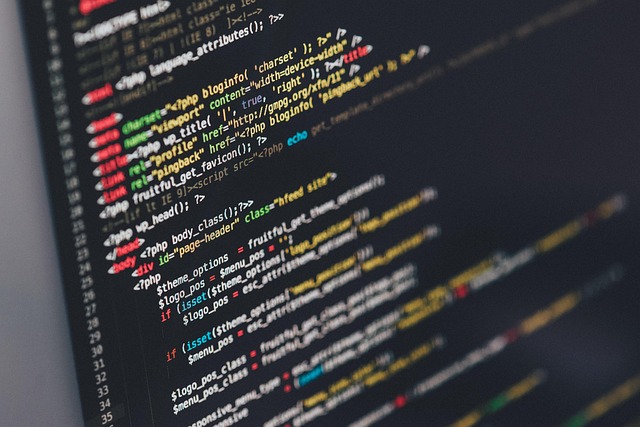DevOps didn’t start in boardrooms or billion-dollar startups. It grew out of frustration. Development and operations used to be two separate camps — devs focused on building, ops focused on keeping systems running. The handoffs were clunky, timelines slipped, and blame got tossed around like a hot potato.
Then came the pivot. Around the early 2010s, companies started shifting from isolated teams to continuous pipelines. Automation helped, but tools weren’t the cure. The real breakthrough came when culture changed — when teams started owning the product end-to-end, talking more, and prioritizing fast feedback over rigid control.
Now we’re in a different landscape. DevOps isn’t just a Silicon Valley badge anymore. Small and mid-sized companies are jumping in because they have to move fast and stay lean. Better collaboration, shorter cycles, fewer surprises — it’s not about being flashy. It’s about doing the work smarter and staying competitive.
Infrastructure is no longer something you rack and stack. It’s something you write. In 2024, Infrastructure as Code (IaC) has become the default for teams looking to scale fast and stay sane. From Terraform to Pulumi, codifying setups makes environments reproducible, trackable, and a lot less error-prone.
Security teams are also stepping into automation territory. Compliance scans no longer wait until the end of the pipeline. Tools fire off checks with every commit, flagging the misconfigurations before they ever hit production. The result? Fewer late-night fire drills. More sleep.
Pipelines are getting smarter, too. Manual deployments are almost a red flag now. Strong teams are tying together build, test, scan, and deploy steps in streamlined flows. It cuts human error and frees up time for creative work. The goal isn’t to remove people from the process. It’s to let them focus where it counts.
AI Is Speeding Up Workflow Without Replacing Humans
Tech doesn’t sleep, and neither does the pressure on creators to deliver faster, better, and more often. That’s where AI steps in—not to take over—but to take the edge off heavy tasks. Predictive tools are letting creators spot editing hiccups or bounce rates before they hit publish. It’s not magic. It’s machine learning analyzing patterns, flagging weak points, and giving vloggers a shot at fixing issues before they snowball.
AI-assisted root cause analysis is also gaining real traction. Say a vlog’s performance tanks. Instead of guessing what went wrong, creators can now lean on AI to break down the timeline, spotlight the dip, and identify if it’s a thumbnail issue, retention drop, or keyword misalignment. That saves time and frustration, especially when you’re juggling other projects.
Teams are tapping machine learning for observability, too. These systems track what’s working across platforms, what’s resonating with audiences, and where bottlenecks crop up in the production cycle. It means less guesswork and more strategic moves.
Check out how all this ties into development workflows in AI-Assisted Coding and GitHub Copilot’s Impact.
Security isn’t something you tack on at the end anymore. It’s not a feature, not a final checkbox. Today, it’s built in from the first conversation about architecture, through every line of code, and all the way to deployment. This shift—known as ‘shifting left’—has gone from best practice to baseline.
Why? Because attackers don’t wait. And the earlier you catch vulnerabilities, the cheaper and easier they are to fix. In real terms, that means integrating threat modeling into design documentation, running static analysis as soon as code is written, and baking authentication logic into the initial wireframes.
Take real-world cases like the finance app that caught a credential leak during unit testing or the streaming platform that flagged injection points during the staging pipeline. Both incidents dodged public breaches because security wasn’t an afterthought.
Tools are stepping up in a big way. Platforms like Snyk, GitHub Advanced Security, and automated CI/CD scanning solutions are giving teams the ability to stay secure by default. But at the end of the day, tools don’t replace awareness.
Security built late is security built weak. Build it in from start to finish.
Custom Developer Experiences Are the New Advantage
More creators with dev chops—or solid platform teams under the hood—are ditching generic tools and building custom workflows tuned to how they actually work. Whether it’s personalized analytics dashboards, one-click content repurposing pipelines, or tailored publishing queues, these in-house solutions save time and reduce mental friction.
Platform teams are shifting, too. Instead of acting like gatekeepers, they’re enabling creators to move fast without breaking things. When done right, they build just enough structure to support experimentation without locking anyone into rigid systems.
One clear win in this area is self-service. Vloggers and their teams want fewer dependencies and more autonomy. Reusable templates, drag-and-drop editing suites, and batch upload tools that require zero technical overhead are letting creators spend less time toggling tabs and more time creating. It’s all about cutting cognitive load so ideas have room to breathe.
Logs, metrics, traces — all in one stack
Modern vlogging isn’t just about what hits the feed — it’s also about what’s happening under the hood. Creators and platform engineers alike are getting smarter with observability. Instead of treating logs, metrics, and traces as separate silos, the trend is leaning toward unified stacks that bring everything together. This gives a cleaner view of what’s working and what’s breaking, without the swivel-chair debugging.
The real shift is from reactive alerts to proactive insights. Don’t wait until a stream drops mid-roll or a viewership spike crashes your monetization dashboard. Good observability stacks flag weird patterns before they become problems. Faster response times mean fewer lost followers and smoother content drops.
What does good look like in agile environments? Lightweight tools, clean dashboards, and the ability to plug new data sources in without breaking your flow. Vloggers working with editors and tech support crews benefit from centralized visibility, where everyone sees the same signals — in real time. It’s not just IT talk anymore. Observability is becoming part of the content game.
DevOps used to be the future. Now it’s just the foundation. If you’re a creator working across platforms and managing workflows, DevOps principles aren’t optional—they’re expected. You don’t need to call yourself a techie to see the value. Simple automations, clean version control, and standardized processes make everything hum smoother.
What’s more critical in 2024 is building cross-functional awareness. A vlogger who understands editing, scripting, community management, and basic system operations is ahead of the pack. The magic isn’t in mastering every skill—it’s in knowing just enough to work well across domains and spot problems early.
The playbook: start small. Automate one part of your production. Test tighter upload schedules. Streamline feedback loops. Then iterate fast. Every creator who treats their setup like a living system—not a one-off project—builds momentum. Just make sure everything you try is tied directly to your broader goals. Efficient creators stay relevant by syncing tools, tech, and teamwork without getting lost in complexity.


 Lorissa Ollvain is a tech author and co-founder of gfxrobotection with expertise in AI, digital protection, and smart technology solutions. She is dedicated to making advanced technology accessible through informative, user-focused content.
Lorissa Ollvain is a tech author and co-founder of gfxrobotection with expertise in AI, digital protection, and smart technology solutions. She is dedicated to making advanced technology accessible through informative, user-focused content.

